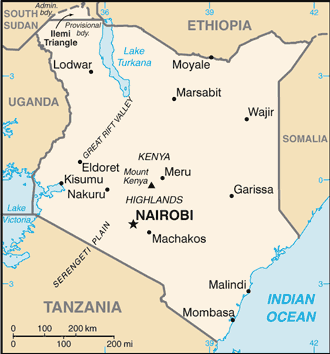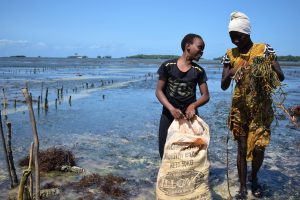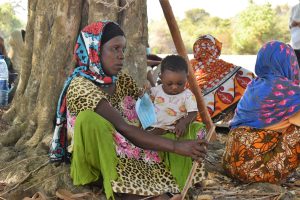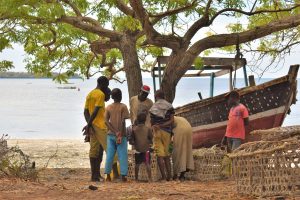Kenya
The Republic of Kenya boasts one of the most prosperous economies on the African continent, with an average annual economic growth rate projected to be around 5.2% for 2024, according to World Bank estimates. In recent years, the country has made significant progress but still faces numerous challenges, including poverty, wealth distribution inequalities, unemployment, and restrained access to basic services. These issues are exacerbated by the effects of climate change, such as droughts and floods, which have significant impacts on the economy.
From a governance perspective, Kenya has undergone substantial change in the last decade, following the introduction of the new Constitution in 2010 which has established a decentralized governmental structure in favour of local entities (47 counties).
The country's development strategy is represented by the Government's "Kenya Vision 2030" document, which is implemented through medium-term development plans. The strategy is based on four priority pillars: development of the manufacturing sector and job creation, social housing, access to health for all, and food security and nutrition.
the Italian contribution
The Italian Agency for Development Cooperation (AICS) operates in alignment with the development strategy of the Kenyan government, by promoting initiatives in several key sectors.
The Italian cooperation has a long presence in Kenya, and relations were formalized through the signing of the "Agreement for economic, technical and development cooperation between Kenya and Italy" in November 19, 1985. Since the late nineties, Kenya has become a priority country for Italian cooperation; bilateral cooperation has therefore consolidated over time in some sectors with a traditional presence, such as agriculture and irrigation, WASH, territorial development and human development (health and education), and in some areas of intervention, such as the County of West Pokot in the North West, bordering Uganda, Baringo County along the Rift Valley, informal peri-urban settlements in Nairobi, Kitui County in the South East and Kilifi County on the Indian Ocean coast. These counties fall within the ASALs classification (Arid and Semi-Arid Lands), representing the areas which are most affected by the effects of climate change.
In March 2023, the Multi-Year Indicative Plan between Italy and Kenya 2023 - 2027, known as the "Kenya-Italy Sustainable Development Partnership", was officially launched. This is a joint indicative cooperation strategy that harmonizes development cooperation priorities of Italy with the Kenya Vision 2030, establishing for the first time a comprehensive strategic framework within the relations of friendship and cooperation between the two countries. The document, activated in 2023 during President Mattarella's visit to Kenya, covers the years from 2023 to 2027 with a total budget of 100 million euros.
AICS activities in Kenya currently focus on three of the five pillars of the United Nations 2030 Agenda, namely People, Planet, and Prosperity, that can be associated with five main areas of intervention: i) Agricultural Development, Forestry, Fisheries, Environment, ii) Women's empowerment, human rights, and support to civil society, iii) Urban Development and Infrastructure; iv) Support to the private sector, and v) Access to basic services.
With regards to modalities of intervention, the Italian Cooperation funds bilateral initiatives realized by Kenyan government institutions through grants and concessional loans, in implementation of "Kenya Vision 2030." In the absence of 'Project Implementation Units', the Nairobi Office of AICS provides technical assistance to the relevant ministries, in full respect of the principles of ownership, alignment, and use of country systems. In addition to governmental bilateral cooperation, AICS collaborates with the numerous Italian Civil Society Organizations (CSOs) present in Kenya, that have been working for decades in a spirit of solidarity and partnership and that successfully participate in calls launched by AICS Rome and those managed locally by the Nairobi Regional Office for the realization of both development and emergency initiatives. Many of the CSOs are part of COIKE, a coordination and representation body for Italian CSOs in Kenya. Traditional sectors of intervention include agriculture and resilience, health, child protection, and education. Additional partners for the implementation of cooperation initiatives in the bilateral channel include the other actors part of the "Italy system" of development cooperation, such as research institutions, universities, and the Italian private sector.
In the multibilateral channel, AICS collaborates with UN Agencies (such as UN WOMEN, UNEP, UNIDO, and UNDRR) and other International Organizations, such as the International Center for Advanced Mediterranean Agronomic Studies of Bari (CIHEAM Bari), as well as with the European Union for the implementation of "delegated cooperation" initiatives, i.e., those projects entrusted by the European Union to Member States for their realization.
Strategic Documents
| Author | Title | Publication Date |
|---|---|---|
| Government of the Republic of Italy - Government of the Republic of Kenya | - Kenya-Italy Multi-Annual indicative development strategy 2023-2027 - Joint Declaration on the Multi-annual Indicative Development Cooperation Strategy "Kenya-Italy Sustainable Development Partnership 2023-2027" | 2023 |
| Government of the Republic of Kenya | Kenya Fourth Medium Term Plan 2023-2027 | 2023 |
| EU Delegation in Kenya | EU Multi Annual Indicative Programme 2021 - 2027 | June 2021 |
| Government of the Republic of Kenya | Kenya Third Medium Term Plan 2018-2022 | 2018 |





